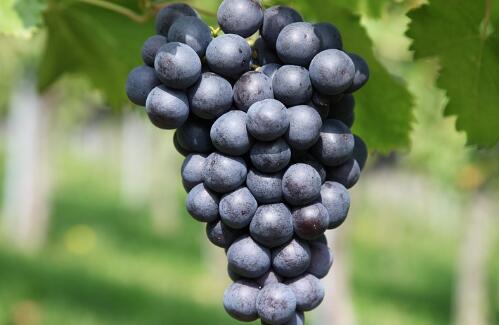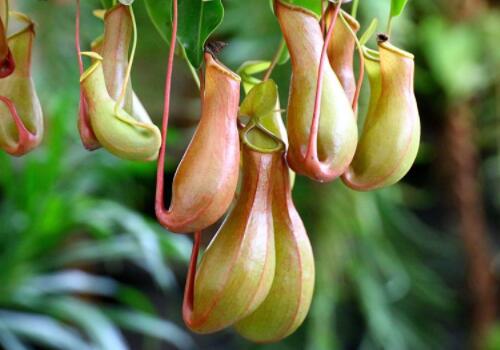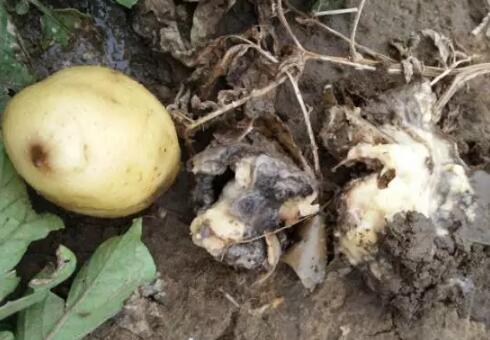Woody vine grape got gray mildew, downy mildew, powdery mildew what medicine?
Although the use of greenhouse, rain shelter, can reduce the incidence of diseases to a certain extent, but the environmental humidity is too high, the grape disease will also occur, accidentally will be infected with gray mildew, downy mildew, white rot, black pox, white rot, powdery mildew, the most serious and most difficult to treat is gray mildew, downy mildew, powdery mildew. What kind of medicine does the grape have gray mildew, downy mildew and powdery mildew?

1. The harm of gray mold
In the process of raising seedlings, even if they are all covered with film and sunshade net, the seedlings cut into the nutrition cup are rarely infected with Botrytis cinerea. A large number of outbreaks of Botrytis cinerea were found in Hunan, Chongqing, Sichuan and other places with the same measures.
Yunnan is an area with strong sunshine, and strong ultraviolet rays kill the spores of Botrytis cinerea, so that the number of spores of Botrytis cinerea in the air becomes less and the harm is lighter. The harm of Botrytis cinerea is not so easy in Hunan, Chongqing, Sichuan, and even Jiangsu, Shanghai, Zhejiang, Jiangxi and other few sunshine areas in the middle and lower reaches of the Yangtze River.
Botrytis cinerea can also be controlled in places with good ventilation, and in places with poor ventilation, especially the Jufeng grape with dewdrops at night, it will be infected with Botrytis cinerea or brown blight of ear rachis, especially in summer black. Pulling flowers, fruit protection, expansion treatment is not timely, will lead to a large number of Botrytis cinerea infection and grain loss.
Therefore, grape planting in the middle and lower reaches of the Yangtze River, from pre-flowering to post-flowering, must regularly prevent Botrytis cinerea and control black pox and white rot at the same time. In other areas, as long as they are not dry areas, as long as you can see the garden with more dew on the grape leaves in the garden in the morning, the measures to control Botrytis cinerea or brown blight of ear axis must be put in place.
Of course, if you can't see dewdrops in the morning, you can easily avoid Botrytis cinerea, but pests such as green bug bugs, aphids and thrips should be properly controlled. Botrytis cinerea is harmful to pre-anthesis, young fruit and ripening stage. if it is not well controlled before flowering and young fruit, the gray mold of mature fruit becomes uncontrollable.
The most effective way to deal with Botrytis cinerea is to ventilate and reduce dampness. the most effective drugs are Pythium, nicotinamide, pyrimidine or iso-carbamide. If the concentration of Pythium is too high, it will burn leaves, so be careful when using Pythium during flowering.
2. Harm of downy mildew
Downy mildew is the number one killer of grapes and is not very controllable. Vineyards can be harmed from spike extension to defoliation.
Downy mildew harms not only leaves, but also flowers and fruits. Moreover, many drugs that claim to control downy mildew are not very effective for downy mildew.
The germination condition of downy mildew is high temperature and rainy, which is the first condition for the germination of downy mildew. If it is sunny and hot during the day and rains at night, downy mildew is likely to break out. The outbreak of downy mildew is inseparable from the wet environment.
Therefore, in the northwest dry areas, there will be no harm to gray mildew and downy mildew throughout the year. In dry and hot river valleys such as Yunnan, downy mildew and powdery mildew often break out together in years with more Rain Water.
The most effective method for downy mildew is ventilation and dampness reduction, and the most effective drug is enoylmorpholine, but enoylmorpholine should not be used more than three times a year, otherwise it will cause drug resistance. Other times, it is necessary to use stone-sulfur mixture, Bordeaux liquid, mancozeb and other protective agents.
If the concentration of stone-sulfur mixture is too high, it will burn leaves, and Xia Hai is very sensitive to the low concentration of stone-sulfur mixture, so it needs to be tested before use. Of course, if you are willing to spend money, azoxystrobin can also be used as a protective agent.
3. Powdery mildew harm
This is the third biggest killer of grapes, infecting leaves, covering the surface of grapes with white ash and infecting fruits. If the fruit is damaged by powdery mildew, it will drop the grain, and if it is light, the fruit will crack.
Powdery mildew is generally harmful in the Yangtze River basin after autumn, and the dry environment is the most suitable for the growth of the pathogen. Including northwest arid areas, there will be outbreaks of powdery mildew.
In dry and hot valleys where humidity and dryness alternate, powdery mildew and downy mildew are harmful at the same time. Eurasian species are heavily infected, European and American species are particularly susceptible to powdery mildew, and Sunshine Rose is not resistant to powdery mildew. Jufeng grape has good resistance to this variety.
The most effective drugs against powdery mildew are ether carbendazim, carbendazol, ethyl ether phenol, oxime fat tebuconazole and other drugs, while the cheapest drugs are sulfur powder or sulfur suspension, stone sulfur mixture and Bordeaux solution. The key is to know how to use it.
Time: 2019-04-09 Click:
- Prev

Can I raise pitcher plants at home? Is it poisonous? Why does it eat bugs? How do you plant seeds?
Pitcher plant is the general name of all species of pitcher plant. Also known as pitcher plant, monkey water bottle, monkey courtyard, pig cage, thunder public pot, belongs to tropical insectivorous plants. Can I raise pitcher plants at home? Is it poisonous? Why does it eat bugs? How do you plant seeds? According to the data of pitcher plant family,
- Next

What are the symptoms of tobacco, potato, cabbage and geranium black shank disease? What kind of medicine should I take?
Black shank is a bacterial disease. The pathogen can overwinter on plant residues in the soil or on diseased potatoes during storage, but it cannot stay in the soil for too long. It occurs in tobacco, potatoes, kale, cabbage, geranium and other crops. What are the symptoms of black shank disease? What kind of medicine should be given?
Related
- Fuxing push coffee new agricultural production and marketing class: lack of small-scale processing plants
- Jujube rice field leisure farm deep ploughing Yilan for five years to create a space for organic food and play
- Nongyu Farm-A trial of organic papaya for brave women with advanced technology
- Four points for attention in the prevention and control of diseases and insect pests of edible fungi
- How to add nutrient solution to Edible Fungi
- Is there any good way to control edible fungus mites?
- Open Inoculation Technology of Edible Fungi
- Is there any clever way to use fertilizer for edible fungus in winter?
- What agents are used to kill the pathogens of edible fungi in the mushroom shed?
- Rapid drying of Edible Fungi

